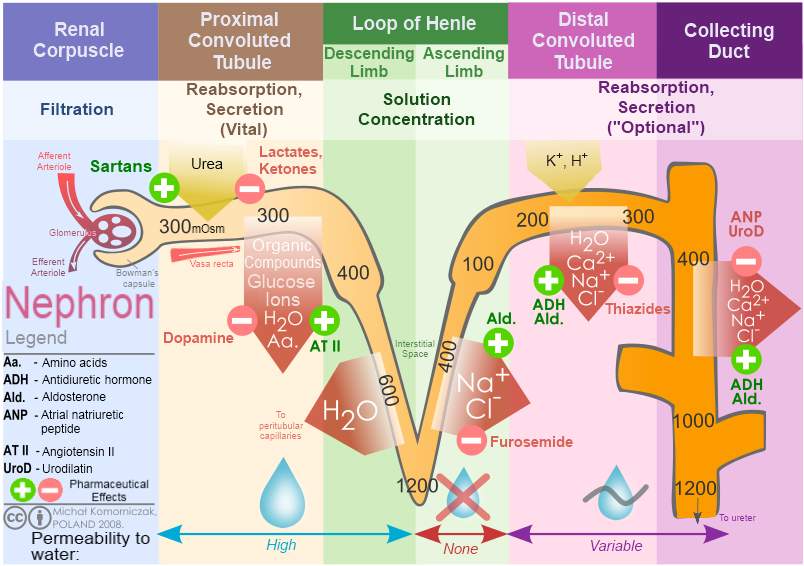Nephrology random notes 01
1. Blood cells
- Hgb: RBC can remove NO in blood--> RBC infusion can elevate blood pressure
- Platelet decrease: cause-->drug?, infection? DIC? hematologic disease? autoimmune?
2. UTI
Urine analysis
- pyuria+bacteriuria + symptoms?
- no need to treat asymptomatic UTI in women except pregnant women
- check renal echo if UTI in men
- Treatment:
*quinolone and Baktar not first line-->
drug resistance carried by plasmids, save these drugs for MDR-TB;
*Ceftriaxone has IM form for those who can not stay in the hospital for IV antibiotics
* yeast and candida--> can be viewed as normal colonies
* Proteus: may be related to stones
3. Proteinuria
- A/C ratio: DM, HTN patients wound check this.
- P/C ratio: generalized protein loss
4. BUN/Cr↑ (pre-renal azotemia) causes
- Breakdown: GI bleeding (RBC), trauma
- Sepsis
- High protein diet
- Steroid use
BUN↓ : may be related to liver function ↓
5. Oliguria----->AKI?
- Pre-renal: try hydration, but beware of heart, kidney, liver function, allergy
- Post-renal: try Foley tube insertion, DDx: stone, malignancy, BPH
- Renal: drug induced? use lasix
6. Skin turgor evaluation spots
- Axillary region
- Inguinal region
7. Diet and CKD in Taiwan
- Avoid: carambole , kiwi fruit, melons, papayas, brown rice, anchovy, salty soup
8.Shortness of breath
- Hypoxia: A/a gradient abnormal, ex. pulmonary edema(CO2 more soluable than O2)
- CO2 retention with muscle fatigue, ex. asthma, COPD
9. ABG/VBG in SOB patients with CKD
- Do not count anion gap because we still cannot differentiate whether metabolic acidosis is caused by infection or renal diseases
- RTA narrowly defined: RTA with normal Cr.
10. Dialysis
- lung edema: refractory to diuretics
- pericarditis
-K+↑, EKG change(+), fail medical treatment (Cr high-->protect heeart, may not have EKG abnormality; can double-check K+ level if doubting hemolysis)
- Uremia
- Intoxication: Ca2+, acylovir,aminophylline ,Benzodiazepam(x), with smaller molecular and less protein binding ability
- Elective: acidosis, anemia
- Uremic encephalopathy diagnosed by rule out, DDx: CVA, stroke, sepsis (BP drop after dialysis!)
High Cr without symptoms: This is a strong person ! XD
11. Spider angioma
- Estrogen↑ --> central arteriole, peripheral capillaries--> on liver cirrhosis
12. Else
- Imipenem: may induce seizure
- Cardiac echo: IVS--> septum thickness, LVPW--> left ventricle thickness, concentric hypertrophy--> HTN related















